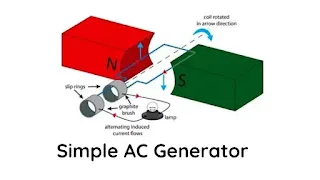Introduction of AC Generator
An AC (alternating current) generator is a device that converts mechanical energy into electrical energy by electromagnetic induction. It is also known as an alternator, and is used to generate electrical power in many applications such as power plants, wind turbines, and vehicles.
The basic design of an AC generator consists of a stationary component called the stator and a rotating component called the rotor. The stator contains a series of wire coils that are arranged in a circular pattern around the rotor. The rotor consists of a shaft, a set of magnets, and an armature.
When the rotor is rotated, the magnetic field generated by the magnets passes through the wire coils in the stator, inducing an electrical current in the coils. The current produced in the stator windings is an alternating current, which means that its direction and magnitude change periodically over time.
The output voltage and frequency of the AC generator can be controlled by adjusting the speed of the rotor and the number of windings in the stator. AC generators are widely used because they are efficient, reliable, and can be easily scaled up or down to meet the power needs of different applications.
AC Generator Definition
An AC generator is a device that converts mechanical energy into electrical energy by electromagnetic induction. It consists of a stationary component called the stator and a rotating component called the rotor.
Working Of AC Generator
electromagnetic induction An AC generator works on the principle of electromagnetic induction, which states that a changing magnetic field induces an electric current in a conductor. The basic working of an AC generator is as follows:
- The rotor, which is a magnet, is rotated inside the stator, which is a set of stationary wire coils.
- As the rotor spins, it creates a changing magnetic field that passes through the wire coils of the stator.
- The changing magnetic field induces an alternating current (AC) in the wire coils of the stator.
- The AC voltage produced in the stator is then transferred to an external circuit through output terminals.
- The output voltage and frequency of the AC generator can be adjusted by controlling the speed of the rotor and the number of wire coils in the stator.
- The AC generator can also be synchronized with an external electrical grid to produce electricity at a specific voltage and frequency.
Uses Of AC Generator
AC generators are commonly used in power plants, wind turbines, and vehicles to produce electrical power. They are efficient, reliable, and can be easily scaled up or down to meet the power needs of different applications.


